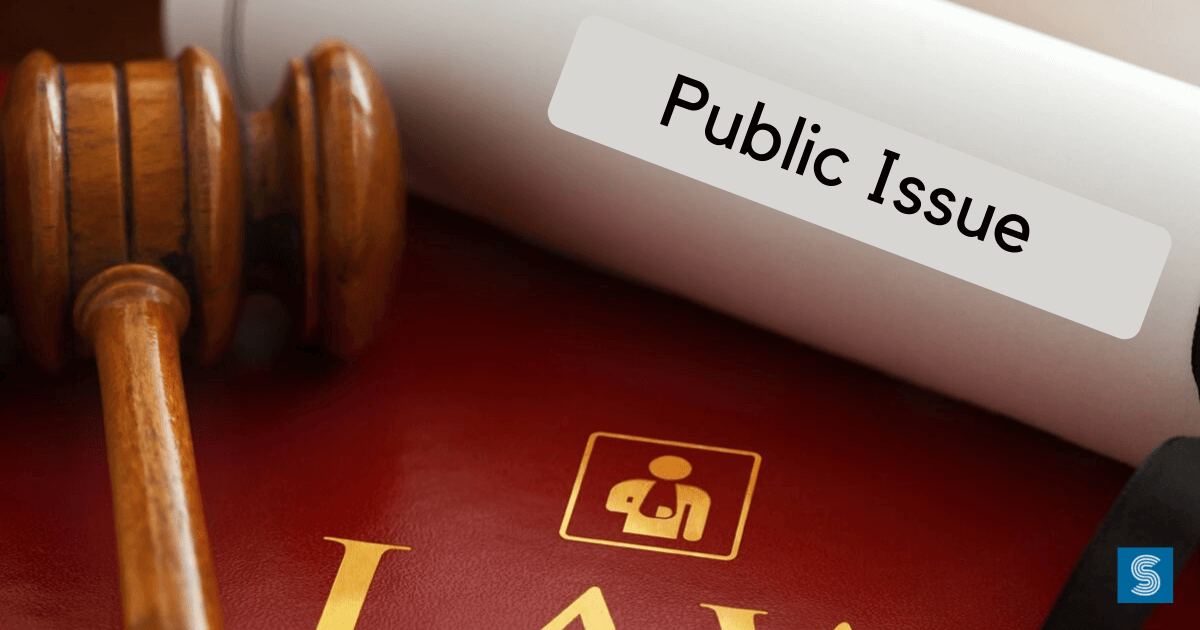Checklist for Buyback of Shares under Companies Act 2013: A Comprehensive Guide

Dashmeet Kaur | Updated: Apr 17, 2020 | Category: SEBI Advisory
Buyback is a corporate technique wherein a company repurchases its outstanding shares from the existing shareholders to extinguish their numbers in the open market. Companies prefer to buy back shares for a variety of reasons, such as to write off the accumulated loss or inflate the value of remaining shares by reducing the supply. Section 68 of the Companies Act, 2013 prescribes that any listed or unlisted company which is limited by shares or guarantees with share capital can choose to buyback of shares and any other specified securities. This write-up will provide a complete checklist of buyback of shares.
Table of Contents
An overview of Share Buyback
Buyback of shares is a method of financial reinforcement. It enables companies to approach their shareholders for repurchasing the shares and give them funds in return instead of dividends.
When a company has a substantial amount of cash resources, it may purchase its own shares from the market, especially when the prevailing rates of its shares are much lower than the book value.
Earlier, the Companies Act, 1956, didn’t incorporate share buyback until it got amended in 1999. Besides that, Section 68, 69, and 70 of the Companies Act, 2013, along with the Rule 17 of the Companies (Shares Capital and Debentures) Rules, 2014 monitors the process of buyback of shares.
Regulatory Framework that regulates Buyback of Shares
Following are the legal frameworks which govern and specify the checklist of buyback of shares:
- Companies Act, 2013;
- Rule 17 of Companies (Shares Capital & Debenture) Rules 2014;
- SEBI (Buyback of Securities Amendment) Regulations.
Any company that intends to undertake the process of buyback of shares must comply with the provisions of these regulatory frameworks.
What are the different methods of Buyback of Shares?
A company can repurchase its shares through any of these sources:

- From the existing shareholders (tender offer) on a proportionate basis;
- Open Market through Book-building process & Stock Exchange;
- Buying shares from employees under the scheme of Sweat Equity Shares or Employee Stock Option Plan (ESOP).
Benefits of Share Buyback
There are several advantages that companies avail from repurchasing their shares. Here are the advantages of buyback of shares:
- Inflates the shareholder value- When a company pursues share buyback, it reduces the assets on its balance sheets and inflates its return on assets. Similarly, decreasing the number of shares in the market and maintaining the same level of profitability increases earnings per share. It turns the table for those shareholders who do not sell their shares; yields a higher percentage of ownership of that company’s shares with a higher price per share.
- Protection against hostile takeovers- Buyback of shares helps the promoters to build an efficient defensive strategy against the bids of hostile takeover.
- Indicate that stocks are undervalued- The preliminary signal which a company gives by purchasing its own shares using its reserves is the bottoming price of its shares. By repurchasing the shares at a higher value, the company reduces the number of outstanding shares, which elevates its market value.
Our Recommendation: What you need to know about Buyback of Shares under SEBI Norms?.
Checklist of prerequisites for Buyback of Shares
The Companies Act, 2013 has laid down a list of conditions that each applicant company must fulfill before repurchasing its shares, which is as follows:
- The preliminary condition is that the buyback needs to be authorized by the company’s (AOA) Article of Association.
- Once the company has announced the buyback offer to its shareholders, it cannot be withdrawn.
- A company can use its borrowed funds from any bank, NBFC, or other financial institution for buyback.
- Buyback can be done through Security Premium Account, Free Reserves, and Proceed from the issue of any securities/shares.
- The maximum limit for a company to buy back the shares is 25% of its paid-up share capital & free reserve. The same has to be authorized by passing a special resolution.
- If the buyback is10% or less: then the company needs to authorize the same by passing board resolution in the Board Meeting.
- The buyback process must be completed within one year from the date of passing the board resolution or a special resolution.
Post Compliance
After complying with the prerequisites, the company also have to meet some post requirements:
- Companies must ensure that after the buyback, its debt-equity ratio does not exceed 2:1. It implies that the secured & unsecured debt after share repurchase must not be more than twice of free reserve & paid-up capital.
- All the shares for buyback must be fully paid.
- Any listed or unlisted company cannot issue a new share within six months from the date of Buyback completion.
- There minimum gap between two Buyback transactions is at least one year. The company can only issue a fresh buyback when one year is passed from the date of closure of the previous buyback offer.
- The concerned company must transfer an amount equal to the nominal value of the share purchased to the Capital Redemption Reserve Account and disclose the same in the Balance Sheet.
- Further, the company can use the transferred amount in CRR account for paying unissued shares by issuing to its members as fully paid bonus shares.
Restrictions for Share Repurchase
Apart from conditions, there is a restriction checklist of buyback of shares for the companies opting for it. Let’s look at the restrictions:
- Companies cannot buy back their shares or securities from an individual through negotiated deals, stock exchange, spot transactions, or private arrangements.
- A company can’t repurchase its shares or securities from the stock exchange to satiate the purpose of delisting the shares/securities.
- Companies can’t render any buyback within one year from the expiry date of the preceding buyback offer (if any).
- No company can repurchase its shares unless the ensuing reduction of its share capital is affected.
- Companies cannot purchase its shares or other securities either directly or indirectly through any of its own subsidiary company.
- Also, companies cannot buyback through any investment or group of investment companies.
- If the company has made any default in the repayment of deposits on interest payment thereon, in the redemption of debentures/preference shares/ payment of dividend/any term loan/interest payable to any financial institution, then the company cannot buy back its shares.
Step by Step Procedure for Buyback of Shares
Now that you have perceived the checklist for buyback of shares, you must be eager to undergo the process. So follow these simple steps to repurchase your company’s shares:
- Step 1: Call the Board Meeting- First; you need to convene a Board Meeting by sending a notice to the Directors at least 7 days before the date of the meeting.
- Step 2: Approval for Extraordinary General Meeting- At Board Meeting, approve buyback, and fix the date of the Extraordinary General Meeting (EGM). Draft a notice for EGM & affix it with an explanatory statement under Section 102.
- Step 3: Send the EGM Notice-The next step is to send the EGM notice at least 21 days prior to the date of the meeting.
- Step 4: Pass Special Resolution for Buyback of Shares- Conduct the Extraordinary General Meeting to pass a Special Resolution for the approval of the buyback of shares.
- Step 5: File Letter of Offer- Once the Resolution is passed, it’s time tofile the Letter of Offer in (Form SH-8) to the ROC. Ensure to have the signature of two directors on the Form.
- Step 6: Annex a Declaration of Solvency-You should annex (Form SH-9) that denotes the declaration of solvency with Form SH-8. It must also be signed by the two Directors of the company.
- Step 7: Send ‘Letter of Offer’ to the Shareholders- Now you need to send the ‘Letter of Offer’ to the Shareholders of your company within 20 days of filing SH-8 to the Registrar. The ‘Letter of Offer’ must remain open for at least 15 days to a maximum period of 30 days.
- Step 8: Acceptance of Offer- Offer shall be considered as accepted by the Shareholders in case no communication of rejection was intimated within 21 days of closure.
- Step 9: Open a Bank Account- When the Shareholders accept your offer, you must proceed to open a separate bank account. Thereon, the total amount of consideration for the buyback of shares should be deposited in a separate bank account. Also, the consideration amount must be paid within 7 days of verification. The shares which are repurchased must be destroyed within seven days of buyback completion.
- Step 10: File Form SH-11 to Registrar- The last step is to file (Form SH-11) within 30 days of the buyback return completion.
Penalty for non-compliance of Buyback Process
In case, a company makes any default in the buyback process under Section 68 of the Companies Act 2013 or any other regulation prescribed by SEBI, it may get subject to the following penalties:
- Such a company shall be penalized with not less than INR1 Lakh that could exceed up to INR 3 Lakhs.
- Moreover, each officer engaged in such a process shall be punished for a maximum period of three years or fined with an amount of not less than INR 1 Lakh.
Conclusion
This checklist of buyback of share has covered all the essential aspects involved in the process. Through repurchasing the shares, companies can improve their share value and increase earnings per share.
If you want to ease the procedure of buyback, take the consultancy of Swarit Advisors. We can help in the preparation of documents and guide you about the appropriate mode of share buyback for your business.














